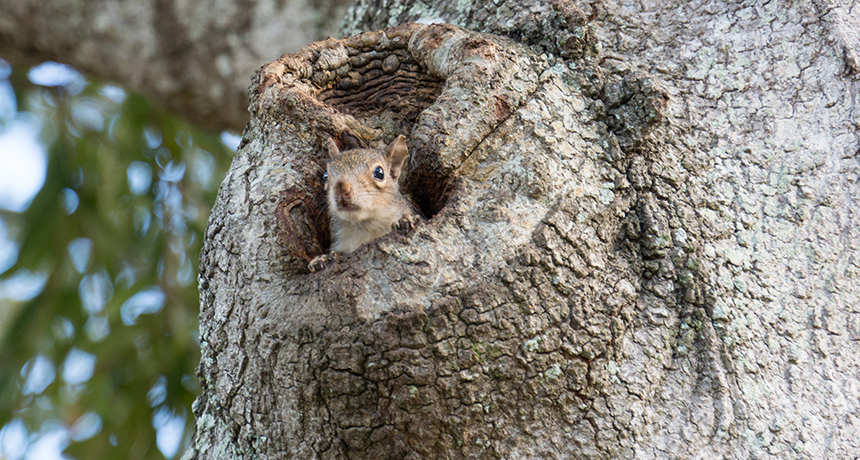Questions for ‘As trees come down, some hidden homes are disappearing’

Squirrels are just one of the many species that dwell in tree hollows.
starryvoyage/iStockphoto
Share this:
- Share via email (Opens in new window) Email
- Click to share on Facebook (Opens in new window) Facebook
- Click to share on X (Opens in new window) X
- Click to share on Pinterest (Opens in new window) Pinterest
- Click to share on Reddit (Opens in new window) Reddit
- Share to Google Classroom (Opens in new window) Google Classroom
- Click to print (Opens in new window) Print
To accompany feature “As trees come down, some hidden homes are disappearing”
SCIENCE
Before Reading:
1. Most wild animals have to make their own homes. Where might they find shelter from wind, rain and snow?
2. Many species around the world live in hollowed out areas inside trees. What advantages might this have for them?
During Reading:
1. Why are tree hollows disappearing?
2. What are two ways that tree hollows form?
3. How many species need tree hollows to survive (based on this story)?
4. Why do all tree hollows in Australia take many years, sometimes hundreds, to form?
5. Why are tree hollows scarce in cities?
6. Why might fewer tree hollows lead to more stress for animals that live in them?
7. What two things did Kristina Cockle and her colleagues record when they were studying tree hollows in Argentina?
8. What did Cockle and her colleagues find had mattered most for the survival of baby birds when it came to tree hollows?
9. What are nest boxes and how do they compare to tree hollows?
10. Why did Darren Le Roux move dead trees to a site near the Molonglo River?
After Reading:
1. Studying animals inside tree hollows can be difficult. In this story, some people have to climb high in trees to find out what is inside the cavities. Others use cameras to monitor them. How else might this be done? Come up with a plan to find and monitor tree hollows near your home or school.
2. The story describes two methods that people have used to create homes for animals that live in tree hollows (nest boxes and dead trees). How else might you create a home for these animals? Use information from the story to describe the pros and cons of your idea.